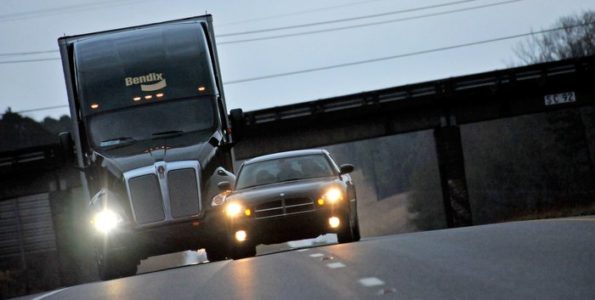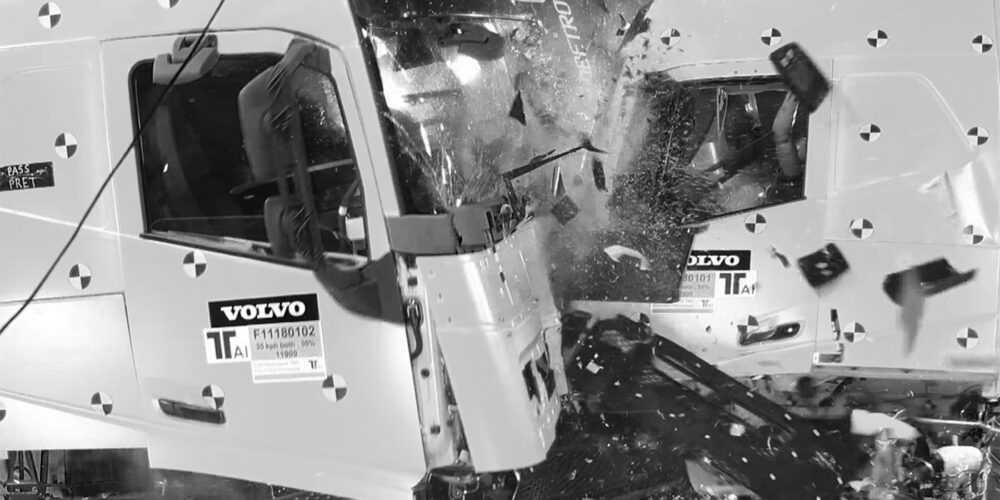A great deal of ink has been spilled on integrated powertrains and the trend toward vertical integration at the original equipment manufacturers (OEMs), an arrangement in which the OEM owns the component supply chain. But how does this impact the fleet executive looking to secure new sophisticated safety systems, for example? This topic takes me back to a friendly discussion I had with the general manager of marketing and strategy of a major OEM (which occurred quite frequently, and I batted near .000 in winning these debates). I had written press copy using the term “vertical integration” and it was strongly suggested that I use the description “vehicle integration.” At the time, it seemed like a minor change, but why is this important today?
A simple fact: Behind the scenes, Tier One suppliers are an integral part of the OEM manufacturing and integration process. OEM-owned “vertical” integration is simply another option for fleets focused on fielding the most efficient and productive rolling iron possible. The fact that OEMs continue to make Tier One supplier components available should be telling. Heavy-duty truck components must be integrated and Tier One suppliers are powerhouses by excelling at what they do: making sure the vehicle is seamlessly integrated no matter the system.
Want to read more from Dave Giroux? Click here to check out his past columns.
For one example of this, let’s take a close look at how Bendix knocks this out of the park on integrated and advanced safety systems by partnering with OEMs and fleets.
“For fleets, the supplier relationship is still important and will increase in importance as technology advances to deliver more automated features, but additional complexity as well,” explained Richard Beyer, vice president of engineering and research and development at Bendix. “This means that problems may arise that will involve a vehicle-level solution—one in which the OEM and supplier need to work together to correct the issue.”
Beyer went on to explain that integration is key to the development and deployment of supplier-developed systems. They are far more than simple bolt-on additions. Think about the purpose of advanced safety systems: If they weren’t deeply integrated into the truck, then chances are that they wouldn’t be as effective. And that’s a scary thought. But remember that today’s advanced safety systems are so effective that they are being used as the foundation for automated drive assistance systems, connectivity and advanced fleet management. Integrating the Bendix Wingman family of advanced safety systems into today’s trucks is a great example of supplier and OEM collaboration working for you.
“The application and validation process [for the Wingman safety system] is extensive,” Beyer said. “Multiple complex systems need to communicate in a unified manner. We integrate the human-machine interfaces [HMI] into the dash and the communication from Wingman to the powertrain drives the need to have a coordinated release process of the independent systems.”
And those are just a few integration bullet points. Beyer noted that all of the Wingman systems have to work with the truck’s powertrain system to communicate and allow proper operation of the truck. Validation between the advanced safety system and the powertrain is necessary to mitigate launch issues, for example. The fact that Wingman adoption is growing across OEM nameplates demands that Bendix creates a uniform experience regardless of the make and model.
“Uniform alert strategies, in particular for critical alerts, could help lower the possibility of issues as drivers move between vehicles and simplify the delivery of vital information,” Beyer said. “Finally, we have to consider fleets that want to maintain a similar experience for their drivers through retrofitting technologies to bring older vehicles up to newer applications.
“In many instances, the relationship with the OEM is critical to ensure the infrastructure is available to support an upgrade and that integration with other systems on the vehicle is seamless. This is one of the reasons why we look to the OEM to launch the technology first, before we will offer an upgrade.”
It’s all about identifying the problem, targeting a solution and then executing the plan—from deployment, training and use. And that includes training your corral of technicians, which is critical to ensure the acceptance of new systems and their successful application within the fleet. Fleet managers may be tempted to shut off safety systems because of driver complaints. (We’re all looking at you, lane departure warnings.) But upon inspection, the real issue is that the driver doesn’t understand how the system works on their particular vehicle. Suppliers must provide training on what the system does and—just as critically—what it doesn’t do. This can go a long way to helping drivers gain an appreciation for how the system can help.
“When it comes to training, a close relationship with the supplier and the OEM is important,” said Fred Andersky, director of customer solutions for the controls group with Bendix. “Suppliers best understand the intricacies of their systems and can provide technical training support to help technicians properly diagnose and, therefore, deliver a more cost-effective resolution to the issue. Too often we see warranty claims on expensive items such as ECUs come through when a simple adjustment or sensor replacement would have solved the situation. This is expensive for the fleet, the OEM and the supplier.”
Vehicle integration has never been stronger as fleets demand more from their equipment and OEMs and suppliers race to deliver. But in your pursuit of equipment excellence, remember that forgetting one piece of this puzzle is an error that could impact performance, safety and cost of ownership. The bottom line for today’s fleets: You have to work closely with your suppliers, like Bendix, to identify specific needs and collaborate with OEMs with your chosen supplier to ensure proper vehicle integration. Equipment innovation has and will continue to come from collaboration.














